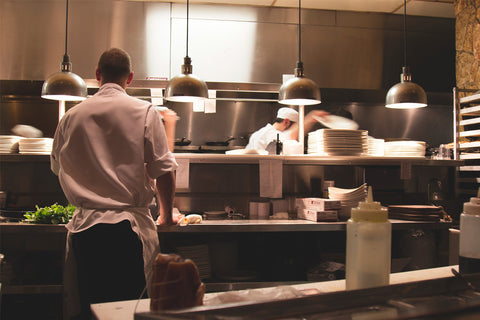Traditionally the restaurant wage discussion is dominated by deliberations on a waiter's living wages versus tip income, but behind the hard-working servers that man the front lines in a restaurant toils a whole slew of kitchen support staff that up until now has been absent from the per diem debate.
Today, however, the changing economic climate is causing the wage disparity spotlight to shift to kitchen staff. In a job where the hours are long and the labor often hot and stressful, compensation drags uncomfortably close to the minimum. When combined with student debt for culinary schools and the steep hikes in living expenses nation-wide, it is becoming more and more difficult to attract new talent to back of house positions, leaving restaurants with too-green line cooks or understaffed entirely. In an industry where the average profit margin is a slim 4.5% (according to the National Restaurant Association), restaurateurs are stretching to find extra dollars to retain back of house talent and attract new blood.
One popular strategy has been to distribute tip dollars evenly between waitstaff and kitchen staff, but this presents new challenges: most notably a corresponding drop in server wages, which may or may not cause similar staffing issues for the front of house. When juggling this balance - and how to adequately compensate everyone that contributes to the success of the restaurant - it becomes difficult to choose between distributing existing dollars between all staff members or raising menu prices in an effort to bring in more revenue, a strategy that may negatively impact the overall success of the business.
Luckily a third, more creative option has taken hold along the West Coast and in several of the wealthier East Coast cities like Cambridge, Massachusetts. A number of restaurants have begun to implement revenue sharing for kitchen staff. For customers, this shows up in the form of a hospitality surcharge of on average 3% - just pennies on a typical check. But those pennies add up to the employees - for some this has already closed the wage gap between front and back of house by a third. This strategy also has the potential to increase employee morale, because in the same way that stellar service translates to great tips, taking pride in the food they make and the way it's served earns repeat business and more sales.
Want to equip all your staff members with the tools to keep them organized and stress-free? Contact us to talk about how we can help you keep your front and back of house on the same page.




